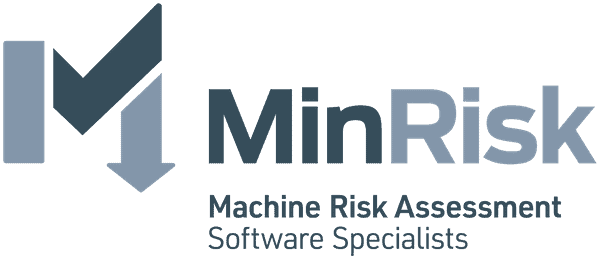What is a risk assessment? Are there different kinds of risk assessments?
A risk assessment is a systematic, planning exercise, designed to effectively identify the hazards, realise the likelihood of harm, and determine what additional controls or activities need to be implemented to reduce the risk of someone being hurt in an environment.
There are a range of different types of risk assessments. There are risk assessments that might relate to process safety such as, HazOps (Hazardous Analysis and Operability) that use a lot of guide words. You can have checklist based risk assessments, manual handling risk assessments, there are chemical handling risk assessments also, and you can do risk assessments that are tailored to very specific elements, such as ignition sources related to combustible dusts.
There are also risk assessments as they relate to machine safety as well. All risk assessments follow the same general principle, but they are all systematic, structured processes to go through to identify hazards, establish who might be harmed and how, and to establish what existing controls are in place, and what additional controls need to be put in place following the assessment.

How do risk assessments fit into the broader health and safety landscape?
All organisations will need a policy and a management system of some description in place to manage their health and safety obligations and to keep risks minimised. After an organisation sets its policies, which should include commitments as well as who’s responsible for what, and at a very high level, how things will be done, risk assessments are the next cab off the rank. Risk assessments are an important part of that cycle, because your risk assessment is effectively a planning exercise that’ll tell your organisation what it needs to do to look after your people. Once a policy has been set, a risk assessment is essential for setting the requirements that you need to put in place to ensure safety is achieved.
Risk assessments are undoubtedly one of the most important aspects of any safety management system.
Why is it important to review health and safety risk assessments?
When we think about the safety landscape, and how risk assessments fit into the bigger picture, at the end of the day we’re talking about reducing harm to people. Where humans are involved there are many factors, creating a dynamic, challenging environment. You can have organisational factors, technology changes, and process changes, all of which can alter risk.
What’s really important is that you can revisit your risk assessment and consider the current landscape considering all of those factors, to make sure that the arrangements that you have in place are still adequate and are still relevant, and that you are still effective in protecting people.

What is involved in the monitoring and review process, and how is performance assessed?
The monitoring and review process is multifaceted. For example, if you’re performing a monitoring exercise, you may carry out tasks, like little mini inspections and audits that may form almost a surveillance program that provides you with an indication, or a leading view on how effective your risk assessment is. That may include monitoring behavior, or monitoring people’s conformance to Standard Operating Procedures (SOPs), for example. That will give you some indication as to how reliable or effective your organisation’s current systems are in protecting safety.
A review process might be a little more structured and more broad reaching, and you will want to involve your stakeholders as you’ll be looking at the entire risk assessment and you’ll be considering its scope.
- Is your initial risk assessment still relevant if you conducted the assessment, and at the time you only produced one type of widget, and that was what your risk assessment was based on?
- If you are producing three types of widgets 12 months later, what does that mean for your initial risk assessment, and how relevant does it remain?
Within the context of that, you need to be stepping down and saying ‘okay what’s changed?’ Has there been anything that’s changed, in relation to the process, in relation to the machinery, and in relation to how we operate the machine? How long does your organisation operate the machine? Who’s operating it? Then you’ll be assessing things like how effective are the controls.
Are the individuals operating a machine following the SOPs that were defined? If not, why not? Now that the engineering controls that we’ve stated are in place, are they still there? Are they still relevant? Are they still performing? And are they still the right solution?
What the monitoring and review process is picking up is clues and indications as to the effectiveness of your risk assessment and its controls. Within the review process there is wide ranging involvement with stakeholders to ensure that you are looking at the whole process.
In your view, how is the performance of a risk assessment assessed?
That’s going to vary a lot depending on what it is that you are assessing. There’s a hierarchy of controls in all health and safety programs whereby things like engineering solutions, should be prioritised over administrative controls, such as the SOP’s, or simple personal protective equipment. That’s because they’re more reliable and be more effective at reducing risks, than relying on purely human factors – that will have a bearing on assessing performance.
Looking at an engineering control, just it’s presence may be enough to inform you that it’s effective, if it’s still there. But if you’re talking about an operator’s compliance to an SOP, that may require a more involved review looking at multiple operators, looking at whether the SOP is followed under lots of different circumstances, and getting feedback from the operators. So it will vary depending on the risk control measure that you’re reviewing. Including how much you would have to do, to determine its effectiveness.
When should a risk assessment be reviewed?
There’s a fairly broad set of circumstances that should trigger a risk assessment review, some of which will be related to events. For example, if you have an accident, an incident, or a near miss that involves a machine, you may want to review your risk assessment after that event to make sure that you have the adequate controls in place. The other times that you may want to consider a review, is when there is a change. That change may be related to your machinery making different products, it also might be related to your machine operating differently. Perhaps there are some productivity improvements that have been identified, that have led you to operate the machine differently, although you’re making the same products. Those are examples of situations that may warrant a review.
There is new guidance and standards that have been produced, that discuss risk assessment review. They provide some information on additional controls that can be fitted.
But other than some of those events, assuming all things have remained equal, you want to be reviewing your risks on a periodic basis. That is a fairly subjective term, but the sort of things that you may want to consider are: the higher the risk, the more often that you review a risk assessment. The more you rely on low reliability control measures such as SOP’s then the more often you should be reviewing your risk assessment.

Aside from that, the other thing that you may want to consider – is not letting a review of your assessment lapse too long – and certainly if everything remained the same, you wouldn’t want to be letting risk assessments get older than a few years.
There is some guidance that came out of the UK which suggested that risk assessments be reviewed annually. The industry needs to adopt that continuous improvement perspective to improve conditions and minimise risk.
Can the monitoring and review process can be conducted, in-house? If so, what would some best practices be?
Many risk assessment reviews that can be done in house. The key thing to consider here is competency. Do you have suitably competent people to be reviewing the risk assessment? If you take machine risk assessments for example, they can be highly complex, and require specialist’s knowledge and experience. If you don’t have that competency and those experienced individuals within your organisation, you can’t do that risk assessment review in-house. The other thing would be to ensure that you’ve got adequate, independent, and a fresh set of eyes carrying out that risk assessment review process.
This means that people are going to be looking at it, fully objectively, with all of the relevant inputs and information, this limits complacency and removes unconscious bias, that may relate to an acceptance of certain standards within your working environment.
The key things to ensure are competency, independence, and a fresh set of eyes. If that can be met, then certainly there’s no reason why that couldn’t be done in-house. For larger organisations it is possible, but for medium sized organisations, performing reviews can be more challenging.
From a liability perspective, are there any benefits from conducting a risk assessment externally or with a third party?
I think if you use external third party providers, assuming they are competent, they are going be looking at things objectively, and identifying hazards and risks that your own internal people might not pick up on.
If that’s the case, and suitable control measures are put in place, then that will reduce the likelihood of injury, which is going to reduce the risk of harm. It’s going to reduce the risk of liability. It’s going to reduce the risk of the bad publicity, and the risk of prosecution. Having a competent, external third party is likely to identify more hazards and risks, including the optimum controls to be put in place. That’s one of the key benefits of using an external party.
Health and Safety Risk Assessment Experts – The MinRisk App
Our machine safety risk assessment app has been designed to make the monitoring and review of risk assessments as easy and efficient as possible. Users can add to, and make edits to existing assessments, while reviewing machinery in real time. The app is the first of its kind in New Zealand and Australia and is already improving efficiencies accross a range of organisations in the manufacturing sector.
We’re offering a no obligation, free demo service to give you the opportunity to trial The MinRisk App’s ground-breaking features like the Lock Out Tag Out (LOTO) Module, Customised Machine Reporting, Machine Analysis and more. Booking a demo is quick and easy, you just have to fill out the short form found on this page and our helpful team will get in touch, and will be on hand to provide you with any support required.




